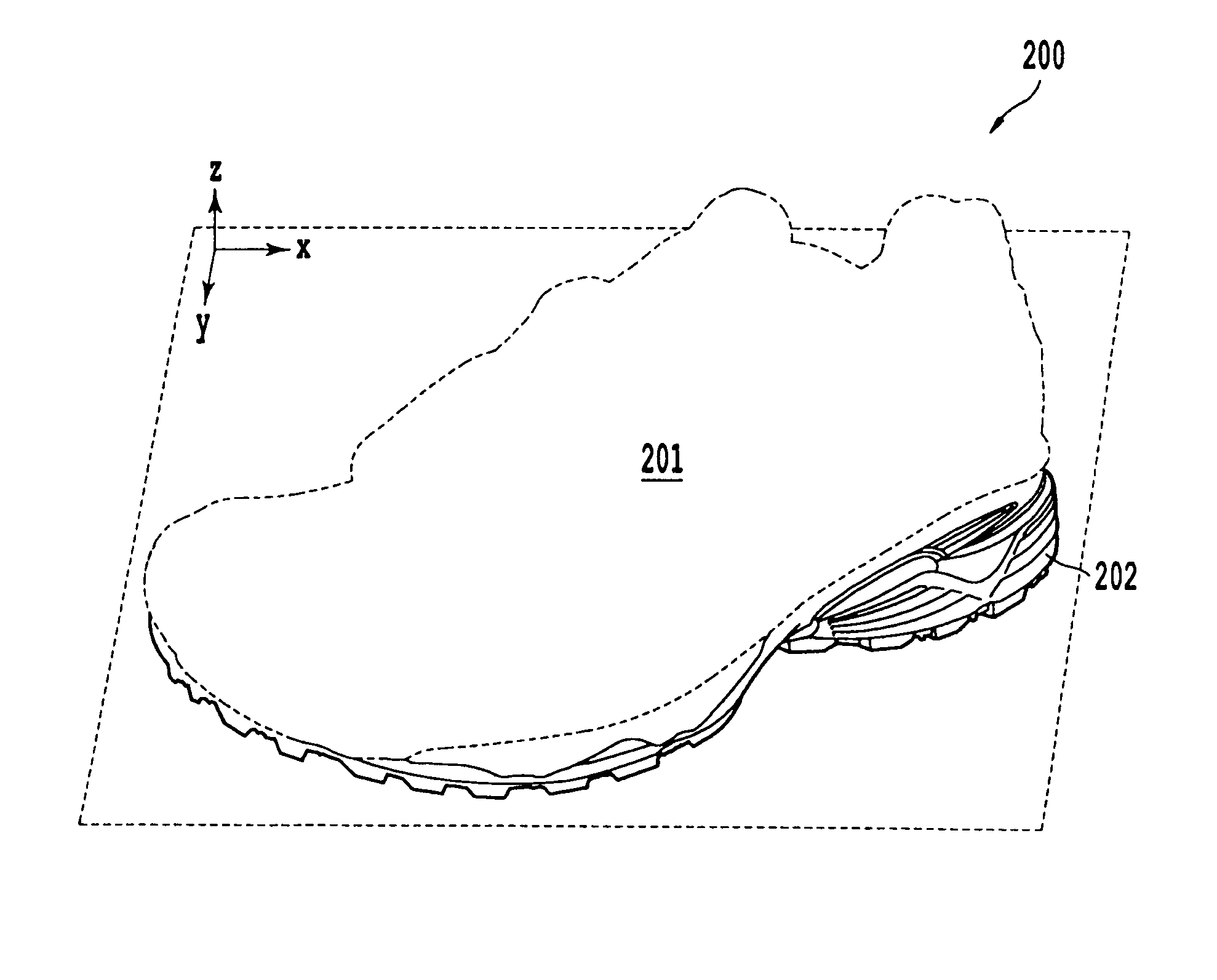Nanoadhesion structures for sporting gear
a technology of nano-adhesion and sporting gear, which is applied in the field of nano-adhesion structures for sporting gear, can solve the problems of loss of potential performance, negative consequences of tightening goggles, and imperfect traditional processes for adhesion components to each other and to the user, so as to improve manufacturing efficiency, improve the effect of keeping the mounting surface attached to the skin, and be easily detached from the skin
- Summary
- Abstract
- Description
- Claims
- Application Information
AI Technical Summary
Benefits of technology
Problems solved by technology
Method used
Image
Examples
first embodiment
Nanofiber Swimming Goggles
[0094]Sporting gear provides useful applications for nanoadhesion. In the first embodiment, swim goggles are commonly used to enable swimmers to keep water out of their eyes. The swim goggles 101 are illustrated in FIGS. 4A to 7B. The swim goggles 101 may include two eye components 102, a nose bridge 108 and a head band 104. The nose bridge 108 may be designed to hold each of the eye components 102 a fixed distance apart. The head band 104 may fit around the head of the wearer and be attached at each end to the eye components 102. Each eye component 102 may include a lens surface 103, a connector interface 107, a head band interface 105, and a sealant surface 106. The connector interface 107 may connect the nose bridge 108 to the eye component 102. The head band interface 105 may connect the head band 104 to the eye component 102. The sealant surface 106 may contact a skin contact area 123, 124 of the left or right eye 121, 122 as shown in FIG. 8A. The shap...
second embodiment
Replaceable Shoe Components
[0104]Another embodiment utilizing the nanofibers 20 is illustrated in FIG. 9 as an athletic shoe 200 having an upper 201 and a lower 202. FIG. 10 shows the lower 202 for a left foot, but the right shoe has a similar construction. The lower 202 may include a full-length primary midsole 210, a directional cradle 211, a first cushion 212, a second cushion 213, a third cushion 214, a rear lower midsole 215, a rear outsole 220, a lateral outsole 221, a medial outsole 222, a center outsole 223, and a front outsole 224. The directional cradle 211 may be attached to the primary midsole 210. The cushions 212, 213, 214 may be attached to both the directional cradle 211 and the rear lower midsole 215. The components of the outsole 220, 221, 222, 223, 224 may be attached to the rear lower midsole 215, directional cradle 211, and / or primary midsole 210. Any of the components that are part of the lower 202 may be attached together where as shown in FIG. 11 a first set ...
third embodiment
Nanofiber Seams
[0107]Yet another embodiment may be to produce a nanofiber seam to connect woven panels as part of athletic gear such as shirts, jackets, shorts, pants, hats, socks, and / or shoes. Various seam configurations may be created with nanofibers. For example, FIG. 12 illustrates an athletic shirt 300 having a first woven panel 310 and a second woven panel 320 attached by a nanofiber seam 301.
[0108]The woven panels 310, 320 may first be cut to the proper size prior to being attached by the seam 301. The woven panel 310 has a top side 312 and a bottom side 313 as shown in FIG. 13A. The woven panel 320 has a top side 322 and a bottom side 323. The panels 310, 320 may have nanofibers 231, 241 attached via the flocking process 1, 12 along an edge of each panel where a seam may be intended to join the panels. The nanofibers 231 may be attached to one side of the panel 310 at a panel edge 311 as shown by FIG. 13A. The nanofibers 241 may be permanently attached to one side of the pa...
PUM
| Property | Measurement | Unit |
|---|---|---|
| diameter | aaaaa | aaaaa |
| length | aaaaa | aaaaa |
| height | aaaaa | aaaaa |
Abstract
Description
Claims
Application Information
 Login to View More
Login to View More - R&D
- Intellectual Property
- Life Sciences
- Materials
- Tech Scout
- Unparalleled Data Quality
- Higher Quality Content
- 60% Fewer Hallucinations
Browse by: Latest US Patents, China's latest patents, Technical Efficacy Thesaurus, Application Domain, Technology Topic, Popular Technical Reports.
© 2025 PatSnap. All rights reserved.Legal|Privacy policy|Modern Slavery Act Transparency Statement|Sitemap|About US| Contact US: help@patsnap.com



